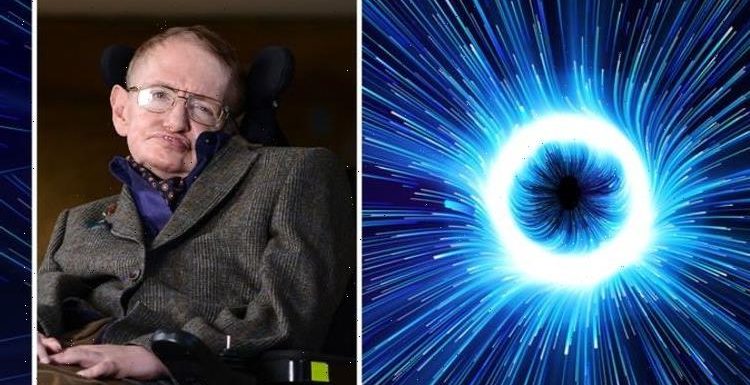
Neil deGrasse Tyson reveals scientists ‘stumped’ over dark matter
We use your sign-up to provide content in ways you’ve consented to and to improve our understanding of you. This may include adverts from us and 3rd parties based on our understanding. You can unsubscribe at any time. More info
The nature of dark matter has eluded scientists for decades, despite the mystery substance accounting for 85 percent of all matter in the universe. Scientists cannot see it, measure it or interact with it in any meaningful way, and yet, they strongly suspect it exists because of the way our universe is shaped. Simply put, without a major source of gravity holding galaxies together, their motion would tear them apart.
Many theories have been put forward to explain this mystery substance, from new theoretical particles to gravity leaking into our world from another dimension.
However, a team of researchers from the US and Europe has gone down another route and will attempt to find out whether dark matter and black holes are one and the same.
Black holes are among the most enigmatic stellar objects in the whole of the universe.
First predicted by Albert Einstein’s general theory of relativity in 1915, they exist as points in time and space where the collapse of a large star leads to matter being infinitely compressed into an infinitely small amount of space.


The resulting singularity breaks down all known laws of physics and anything, even light, that gets trapped in its gravity, is lost forever.
Astrophysicists from the University of Miami, Yale University, and the European Space Agency (ESA) have now suggested that so-called primordial black holes can be used to explain all of the dark matter in the galaxy.
Unlike regular or supermassive black holes, these hypothetical bodies formed soon after the Big Bang but this is problematic because they would not have had enough time to grow.
Instead, the scientists have proposed primordial black holes were there from the start and could explain why we haven’t been able to detect dark matter.
Dark matter: Michio Kaku explains hypothetical substance
The theory was put forward in a paper waiting to be published in The Astrophysical Journal.
Nico Cappelluti, an assistant professor of physics at the University of Miami, said: “Our study predicts how the early universe would look if, instead of unknown particles, dark matter was made by black holes formed during the Big Bang—as Stephen Hawking suggested in the 1970s.
“This would have several important implications.
“First, we would not need ‘new physics’ to explain dark matter.
“Moreover, this would help us to answer one of the most compelling questions of modern astrophysics: How could supermassive black holes in the early universe have grown so big so fast?


“Given the mechanisms we observe today in the modern universe, they would not have had enough time to form.
“This would also solve the long-standing mystery of why the mass of a galaxy is always proportional to the mass of the supermassive black hole in its centre.”
The researchers will probe their theory with the aid of the James Webb Space Telescope (JWST) – the biggest and most powerful space telescope ever built.
The NASA and ESA telescope is due to launch on Christmas Eve and will detect the light from stars some 13.5 billion light-years away – some of the earliest stars in the universe.
The new study will modify a theory first put forward by Professor Hawking and fellow physicist Bernard Carr, who suggested the newborn universe was “lumpy” – regions with extra mass that collapsed into black holes.
Although the theory did not prove popular among scientists, the new study suggests the first stars and galaxies grew around primordial black holes, which then grew to supermassive black holes.
Priyamvada Natarajan, professor of astronomy and physics at Yale University, said: “Primordial black holes, if they do exist, could well be the seeds from which all the supermassive black holes form, including the one at the centre of the Milky Way.
“What I find personally super exciting about this idea is how it elegantly unifies the two really challenging problems that I work on – that of probing the nature of dark matter and the formation and growth of black holes – and resolves them in one fell swoop.”
Source: Read Full Article